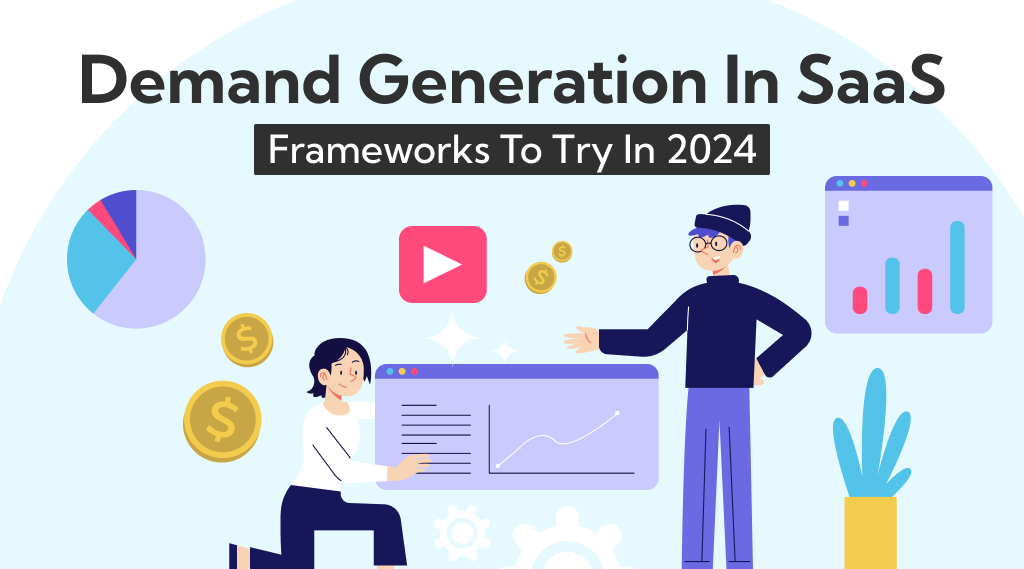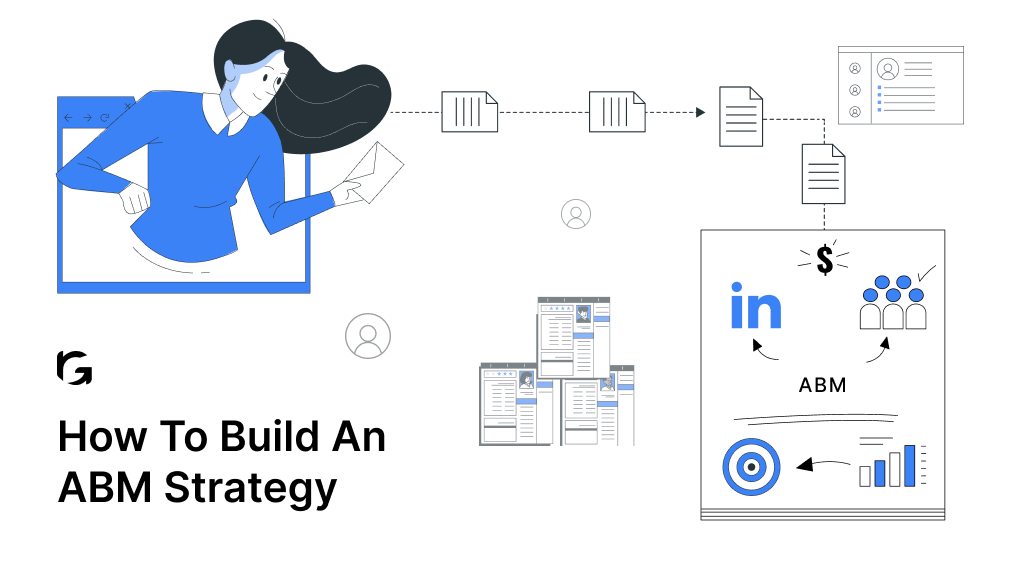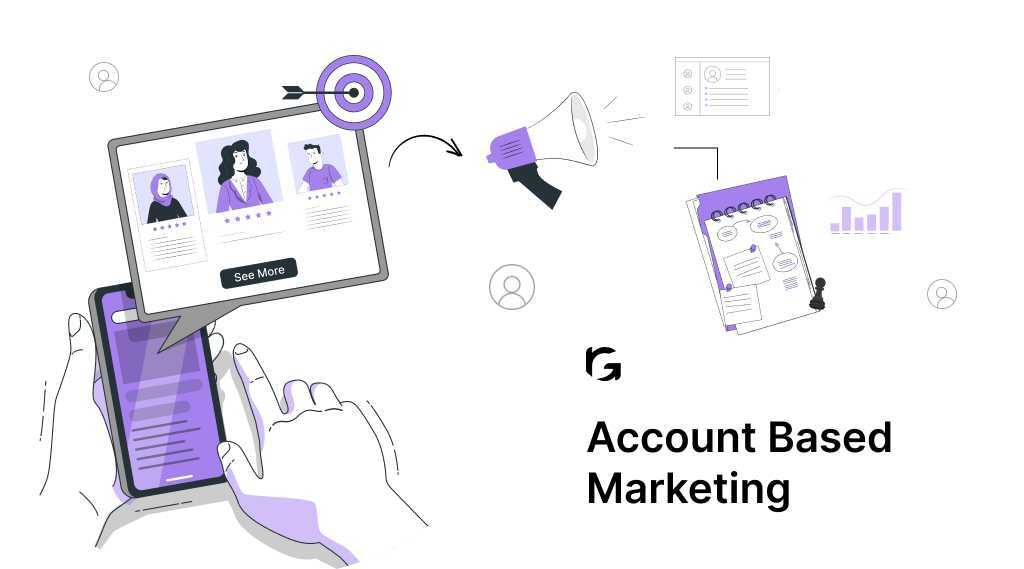Introduction
Demand generation in SaaS involves strategic marketing efforts to create awareness, interest, and demand for a Software as a Service product. The goal is to attract and engage potential customers, guiding them through the sales funnel to eventual conversion.
This multifaceted approach includes content marketing, inbound strategies, lead generation, and various digital channels like SEO, social media, and paid advertising. Email marketing, webinars, and events play a role in nurturing leads, while referral programs and partnerships enhance outreach.
The process aims to not only increase visibility but also to establish the value proposition of the SaaS solution. Analytics and measurement tools are employed to assess the effectiveness of these initiatives, ensuring a data-driven approach to optimizing customer acquisition.
Demand generation aligns marketing and sales efforts to generate a continuous stream of interested prospects, ultimately driving growth and success for SaaS companies in a competitive market.
What is b2b demand generation?
B2B demand generation is a comprehensive marketing strategy that focuses on identifying, engaging, and converting business clients. In the B2B landscape, the sales process often involves multiple decision-makers, longer sales cycles, and complex purchasing considerations. Therefore, B2B demand generation strategies are tailored to address these challenges.
What is demand generation in SaaS?
Demand generation in SaaS (Software as a Service) refers to the comprehensive set of marketing activities and strategies aimed at creating awareness, interest, and demand for a SaaS product or service among potential customers. The goal of demand generation is to generate leads and drive customer acquisition by nurturing prospects through the various stages of the buying journey.
What are the six steps in the demand generation process?
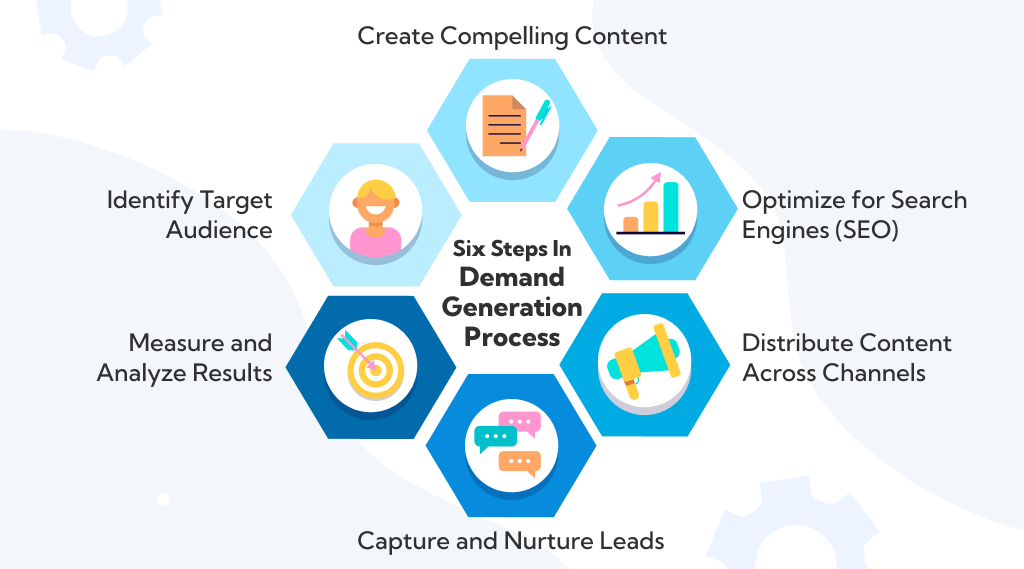
The demand generation process involves a series of strategic steps aimed at creating awareness, generating interest, and ultimately converting potential customers into leads. While the specific steps may vary depending on the source, here’s a general outline of the six key steps in the demand generation process:
1. Identify Target Audience Understand the characteristics and needs of your ideal customers. This involves creating buyer personas and segmenting your audience based on demographics, behavior, and other relevant factors. The more targeted your approach, the more effective your demand generation efforts
2. Create Compelling Content: Develop high-quality, relevant content that aligns with the needs and interests of your target audience. This content can take various forms, including blog posts, ebooks, whitepapers, infographics, videos, and webinars. The goal is to provide value and position your brand as an authoritative source in your industry.
3. Optimize for Search Engines (SEO): Ensure that your content is discoverable by optimizing it for search engines. This involves using relevant keywords, creating meta tags, and improving other on-page and off-page SEO elements. By making your content more visible in search engine results, you can attract organic traffic from users actively seeking information related to your product or industry.
4. Distribute Content Across Channels: Implement a multichannel distribution strategy to reach your target audience where they are most active. This may include leveraging social media platforms, email marketing, paid advertising, and other channels that align with your audience’s preferences. Consistent and strategic content distribution helps expand your reach and engagement.
5. Capture and Nurture Leads: Implement lead generation tactics to capture the contact information of potential customers. This often involves offering valuable resources or incentives in exchange for their details. Once leads are captured, employ lead nurturing strategies, such as targeted email campaigns and personalized content, to guide them through the sales funnel and build a relationship over time.
6. Measure and Analyze Results: Use analytics tools to track the performance of your demand generation efforts. Key metrics to monitor include website traffic, conversion rates, lead quality, and customer acquisition cost. Analyzing this data provides insights into what is working well and where adjustments may be needed, allowing for continuous improvement in your demand generation strategy.
How to build the right SaaS demand generation funnel?
Building the right SaaS demand generation funnel involves a strategic and systematic approach to attract, engage, and convert potential customers. Here’s a step-by-step guide to help you create an effective SaaS demand generation funnel:
1. Define Your Goals and Metrics:
- Clearly outline your objectives. Whether it’s increasing brand awareness, generating leads, or driving conversions, having specific goals will guide your strategy.
- Identify key performance indicators (KPIs) to measure success. This could include metrics like website traffic, conversion rates, lead quality, and customer acquisition cost.
2. Understand Your Target Audience:
- Develop detailed buyer personas that represent your ideal customers. Understand their pain points, challenges, and preferences.
- Tailor your messaging and content to address the specific needs and interests of your target audience segments.
3. Create Compelling Content:
- Develop a content strategy that aligns with the buyer’s journey. Create content for each stage, from awareness to consideration to decision.
- Offer valuable resources such as blog posts, e-books, webinars, and case studies to showcase your expertise and provide solutions to your audience.
4. Optimize for Search Engines (SEO):
- Conduct keyword research to identify terms relevant to your SaaS product and your audience’s search behavior.
- Optimize your website and content for search engines to increase visibility and attract organic traffic.
5. Implement Lead Generation Tactics:
- Use lead magnets, such as free trials, demos, or downloadable resources, to capture the contact information of potential customers.
- Place strategically designed lead capture forms on your website, landing pages, and within content to encourage sign-ups.
6. Utilize Marketing Automation:
- Implement a marketing automation system to streamline lead nurturing and customer communication.
- Set up automated email campaigns that deliver targeted content based on user behavior and engagement.
7. Build Landing Pages:
- Create dedicated landing pages for specific campaigns or offers. Ensure these pages have clear and compelling calls-to-action (CTAs) to guide visitors through the conversion process.
- Optimize landing pages for conversions by minimizing distractions and emphasizing the value proposition.
8. Utilize Social Media and Paid Advertising:
- Leverage social media platforms to promote your content, engage with your audience, and drive traffic to your website.
- Implement paid advertising campaigns on platforms like Google Ads and social media to expand your reach and target specific audience segments.
9. Implement Retargeting Strategies:
Use retargeting ads to reconnect with users who have visited your website but did not convert. This keeps your brand top of mind and encourages return visits.
10. Measure and Optimize:
- Regularly analyze performance metrics using analytics tools. Evaluate the effectiveness of each stage of your funnel.
- A/B test different elements of your funnel, including CTAs, landing pages, and email copy, to identify what resonates best with your audience.
How to set and achieve SaaS demand generation goals?
Setting and achieving SaaS demand generation goals requires a systematic and strategic approach. Here’s a step-by-step guide to help you establish and accomplish your demand generation objectives:
1. Understand Your Business Objectives: To build a robust demand generation strategy, start with a thorough analysis of your business objectives. This involves not only setting revenue targets but understanding the intricacies of market positioning and any specific growth initiatives. Ensure that key stakeholders across the organization are aligned on these overarching business objectives.
Collaborative understanding at this stage lays the foundation for crafting demand generation goals that contribute meaningfully to the broader business goals.
2. Make Your Goals SMART: When setting demand generation goals, adhere to the SMART criteria—Specific, Measurable, Achievable, Relevant, and Time-bound. For instance, instead of a generic goal like “increase leads,” aim for specificity, such as “achieve a 20% increase in qualified leads within the next quarter.”
This clarity provides a focused direction for your demand generation efforts. Additionally, strike a balance between ambition and achievability by considering factors like available resources, market conditions, and historical performance.
3. Identify Key Performance Indicators (KPIs): To effectively measure the success of your demand generation efforts, carefully select Key Performance Indicators (KPIs) aligned with your objectives. Metrics such as customer acquisition cost (CAC), customer lifetime value (CLV), and conversion rates are examples that directly reflect success in achieving your goals.
Ensure that your team has access to real-time data and analytics tools to track these KPIs effectively. Real-time data accessibility facilitates agile decision-making and allows for prompt adjustments to your demand generation strategy.
4. Benchmark Current Performance: Before diving into refining your demand generation strategy, conduct a holistic evaluation of your current performance. This goes beyond surface-level metrics and involves understanding the customer journey, analyzing lead sources, and assessing the impact of various marketing channels.
In addition to benchmarking against your own historical data, consider analyzing industry benchmarks and competitor performance. This nuanced benchmarking process provides insights into areas for improvement and identifies potential opportunities.
5. Align Sales and Marketing: Strong collaboration between sales and marketing is critical for the success of demand generation efforts. Establish an integrated planning approach, where both teams collaboratively define buyer personas, establish clear communication channels, and agree upon lead qualification criteria.
This alignment ensures a seamless transition from marketing-generated leads to sales conversions. Implement robust feedback mechanisms between sales and marketing for continuous improvement. Regularly review the quality of leads, gather insights from customer interactions, and incorporate this feedback into refining both demand generation strategies and sales tactics.
6. Develop a Comprehensive Strategy: Tailor your demand generation strategy to be persona-centric and personalized. This involves developing content and campaigns that resonate with specific buyer personas at different stages of their journey. Take a personalized approach to increase engagement and conversions.
Ensure synergy across various marketing channels. Each channel should play a distinct yet complementary role in the overall strategy. For example, a webinar can be repurposed into blog content, shared on social media, and used in email campaigns for maximum impact. This comprehensive approach ensures a cohesive and engaging customer experience across different touchpoints.
Top 7 SaaS demand generation tools to try in 2024
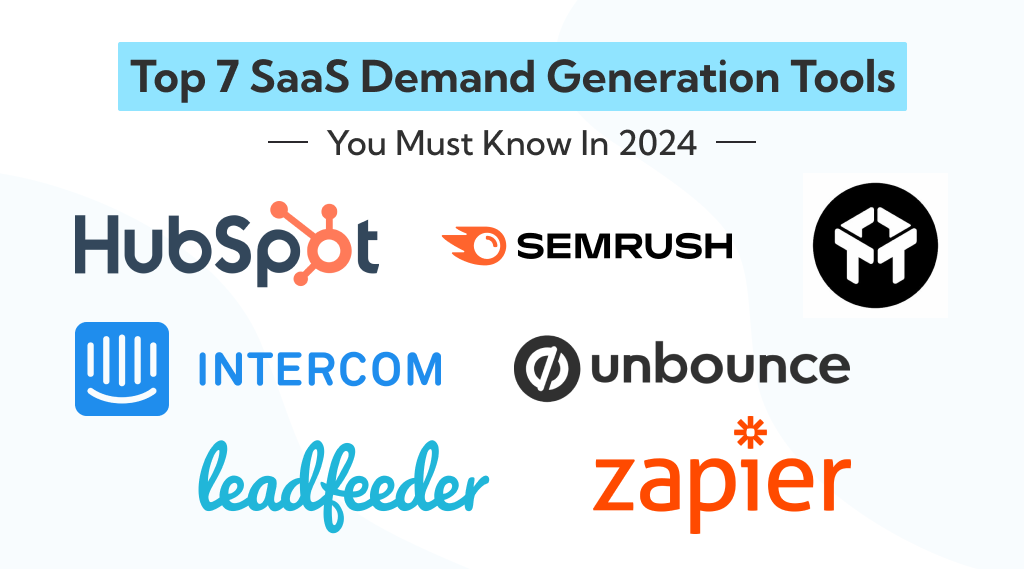
Selecting the right tools is crucial for effective SaaS demand generation. Here are seven top 7 SaaS demand generation tools across various categories to consider in 2024:
1. HubSpot:
HubSpot is an all-in-one platform designed for inbound marketing, sales, and customer service. It provides a suite of tools to attract visitors, convert leads, and close customers. HubSpot’s CRM allows you to manage and organize your contacts, while its marketing automation features enable the creation of targeted campaigns.
With tools for social media management, blogging, and email marketing, HubSpot is a comprehensive solution for SaaS companies seeking an integrated approach to demand generation.
2. SEMrush:
SEMrush is a powerful SEO and content marketing tool that offers a wide array of features. It allows you to conduct in-depth keyword research, track the keyword strategy used by your competition, and optimize your website’s content for search engines.
SEMrush’s capabilities extend to backlink analysis, site audit, and the identification of high-performing keywords. For SaaS companies aiming to enhance their online presence and organic search visibility, SEMrush is a valuable asset.
3. Drift:
Drift focuses on conversational marketing and sales, providing tools to engage website visitors in real-time. Its chatbots facilitate personalized interactions, qualify leads, and route them to the appropriate sales representatives. Drift’s platform includes features like live chat, email sequences, and playbooks for guiding conversations. This tool is particularly beneficial for SaaS companies looking to elevate user engagement and capture leads directly on their websites through conversational marketing.
4. Unbounce:
Unbounce is a landing page optimization tool that empowers marketers to create and test high-converting landing pages without the need for coding. Its drag-and-drop builder simplifies the design process, while A/B testing features help optimize for better results.
Unbounce is ideal for SaaS companies running specific campaigns or promotions, providing a user-friendly platform to build and optimize landing pages that drive conversions.
5. Intercom:
Intercom is a customer communication and engagement platform that enables personalized interactions throughout the customer journey. It offers features such as in-app messaging, targeted messaging, and automation for customer communication. Intercom facilitates proactive engagement, allowing SaaS companies to nurture leads, support users, and build lasting relationships. With tools for customer segmentation and behavior tracking, Intercom empowers businesses to tailor their communication strategies.
6. Leadfeeder:
Leadfeeder is a website visitor tracking tool that helps SaaS companies identify and understand the companies visiting their websites. By integrating with Google Analytics, Leadfeeder reveals which organizations are exploring your site, even if individual users remain anonymous. This tool is valuable for account-based marketing strategies, providing insights into potential leads and enabling targeted outreach efforts to specific companies.
7. Zapier:
Zapier is a workflow automation tool that connects various apps, allowing them to work together seamlessly. SaaS companies can automate repetitive tasks and create workflows that enhance efficiency. For example, Zapier can automate lead data transfer from a landing page to a CRM system or marketing automation platform. With its extensive library of integrations, Zapier empowers SaaS companies to streamline processes and focus on high-impact tasks.
Conclusion
Effective demand generation in the SaaS industry requires a strategic and holistic approach. SaaS companies must clearly define their target audience, craft compelling value propositions, and create engaging content to educate and attract potential customers.
By implementing a demand generation framework that includes inbound marketing, lead generation, and scalable advertising, SaaS businesses can guide prospects through a well-defined funnel. Setting and achieving demand generation goals involves aligning strategies with overall business objectives, tracking key performance indicators, and adapting based on continuous analysis.
Embracing tools such as HubSpot, Drift, and SEMrush can enhance the efficiency of these efforts. In the ever-evolving SaaS landscape, staying agile, customer-focused, and data-driven is essential for sustained success. Through these proactive measures, SaaS companies can not only drive customer acquisition but also foster long-term relationships and advocacy, positioning themselves for growth and competitiveness in the dynamic market.
Ready to revolutionize your SaaS marketing and turbocharge growth? Look no further! Click now to connect with RevvGrowth.com, your trusted SaaS marketing agency.
Elevate your brand, generate leads, and boost conversions with our proven strategies. Let’s amplify your success together – click to ignite growth with RevvGrowth.com!”
